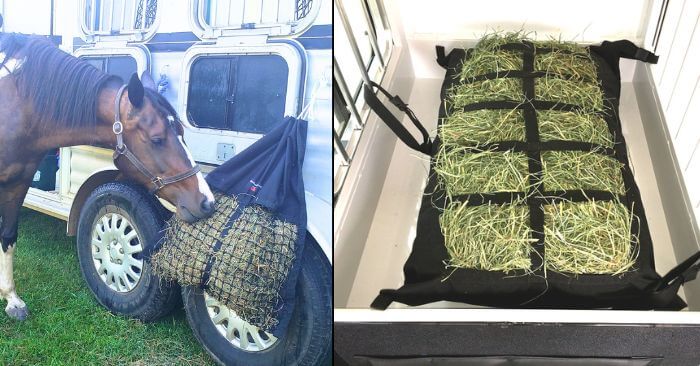Never Exercise Your Horse on an Empty Stomach...Ever!
Why?
Fiber creates a mat which prevents acid splashing in the stomach. The equine stomach produces acid 24 hours a day (16 gallons!) in preparation for constant uptake and begins to empty in as little as 15-20 minutes. Chewing increases saliva production (an alkaline substance rich in bicarbonate), which buffers gastric acid. An empty stomach allows unbuffered gastric acid to slosh and bathe its lining causing discomfort and may induce ulcers. (Learn more about how forage helps buffer gastric acid and prevent ulcers.)

Did You Know?
Transport is an extended isometric exercise for your horse - requiring your equine friend to constantly balance by engaging the abdominal muscles. Contraction of the abdominal muscles forces acidic gastric juices up into the non-glandular (upper) region of the equine stomach. Learn more about Why You Shouldn't Transport Horses On An Empty Stomach
How Slow Fed Free Choice Forage Assists in Colic Prevention
Additional Benefit of Free Choice Forage: Hydration
Take Home Message
Hay Pillow Product Suggestions

Helpful How-to Resources for Slow Feeding
- Sand Colic - The Surprising (Simple) Cure & Prevention
- Can Horses Eat More Hay Without Weight Gain? The Surprising Factors
- How to Introduce & Incorporate Free-Choice Forage: A Detailed Action Plan
- Slow Feed Solutions for Any Environment
- 6 Great Reasons to Feed Your Horse from Ground Level
- 9 Benefits of Slow Feeding Horses
- 7 Slow Feed Dos and Dont's for Horses
- 7 Easy Ways to Help Prevent Colic
- Why You Shouldn't Transport Horses On An Empty Stomach
- Keeping Horses Warm Naturally – Internally and Externally
- Why Most Horses Prefer to Eat Outside





3 Comments -
gabriela • -
Jody Cracco • -
Petrice •
I wanted to share this very good article with vital info for horse owners/riders on a page I administer called The Non Ridden Equine New England. It is one of several non riding groups in the U.S. We were all pleasure riders/equestrians and some still ride but the glue is we go against industry standards of buying/selling, etc. We keep our horses in good care for life. Awhile ago I decided not to use pictures with riding photos as posts – only in the comment thread bc we don’t celebrate riding or use. I was trying to figure out how to copy the material and add a photo of a horse being worked on the ground- like free lungeing in a large ring, not a round pen and not with restraints on the horse. Would you be able to change the photo and send a link so I can publish it. I also wanted to share it with my non profit page BlixxHorses but definitely would not use this photo. Can you help ? Thank you
How safe is this with horses who have shoes?
Love the boots in your promo picture. Do you know the brand/model?